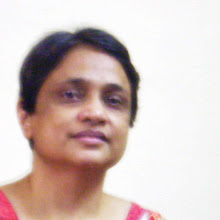Hindi and Urdu
Urdu was born in and around Delhi and UP in the barracks of Army of different rulers. Many rulers from the east and the west had their reigns spread from Afghanistan to East of India.
Basically a sweet mix of Hindi and Persian emerged from this mixing of soldiers and traders - which was named Urdu.
The script used to write Urdu was basically Persian but with some additions and changes to accomodate Hindi sounds.
Hindi has 46 letters (13 vowels and 33 consonants) and 5 complex letters. The sounds of only 17 consonants match the Persian sounds.
So to accomodate all the other sounds of Hindi some new letters were added to the Persian script used for Urdu, namely te (tamaatar), daal (doli) rhe (barhe, kharhe). Everyone who knows the script would know that these new letters do not have normal dots as nuqtah.
Then to accomodate Hindi sounds like bhe (bhindi), phe (phool), the (thaali), the (thokar), jhe (jhoola), chhe (chhaata), dhe (dhamaal), dhe (dhakkan), rhhe (as in barhhe chalo), khe (khaat), ghe (ghar) - "do chashmee he" was added to the consonants be (baazaar), pe (patang), te (titlee), te (tamaatar), jim (jaal), che (chor), daal (davaat), daal (damru), rhe (as in barha beta), kaaf (kursi), gaaf (gaanv) respectively.
Urdu's basic words, almost all the verbs and grammar came from Hindi, as it was born in the Hindi belt, and innumerable Persian and Arabic nouns and expressions became a part of it.
Every word of Hindi, and Persian belongs to Urdu too. There is no limit to it. Many Arabic words too are included.
I mean you can use any Hindi word in Urdu, any Persian word in Urdu, and even Arabic words. That of course makes Urdu a rich language.
Today's Hindi has adopted many Persian words too, and to accomodate the Persian sounds small dots are put under Devanagari letters ka (kursi), ga (gaanv), ja (jaal), and pha (phool) to make them qa (qareeb), gha (gharib), za (zameen), fa (farz) respectively. Hindi has adopted words from many other languages too.
Today the form of Hindi/Urdu or Hindustani, we usually use, has English words too, which enriches the language further. The Bambaiya Bollywood language has Marathi, Gujarati and other words and expressions too.
Let us not play a winning and losing match by fighting over which language is richer or not. With us our languages also evolve to become richer and sweeter, and make communication easier by the day.
Urdu was born in and around Delhi and UP in the barracks of Army of different rulers. Many rulers from the east and the west had their reigns spread from Afghanistan to East of India.
Basically a sweet mix of Hindi and Persian emerged from this mixing of soldiers and traders - which was named Urdu.
The script used to write Urdu was basically Persian but with some additions and changes to accomodate Hindi sounds.
Hindi has 46 letters (13 vowels and 33 consonants) and 5 complex letters. The sounds of only 17 consonants match the Persian sounds.
So to accomodate all the other sounds of Hindi some new letters were added to the Persian script used for Urdu, namely te (tamaatar), daal (doli) rhe (barhe, kharhe). Everyone who knows the script would know that these new letters do not have normal dots as nuqtah.
Then to accomodate Hindi sounds like bhe (bhindi), phe (phool), the (thaali), the (thokar), jhe (jhoola), chhe (chhaata), dhe (dhamaal), dhe (dhakkan), rhhe (as in barhhe chalo), khe (khaat), ghe (ghar) - "do chashmee he" was added to the consonants be (baazaar), pe (patang), te (titlee), te (tamaatar), jim (jaal), che (chor), daal (davaat), daal (damru), rhe (as in barha beta), kaaf (kursi), gaaf (gaanv) respectively.
Urdu's basic words, almost all the verbs and grammar came from Hindi, as it was born in the Hindi belt, and innumerable Persian and Arabic nouns and expressions became a part of it.
Every word of Hindi, and Persian belongs to Urdu too. There is no limit to it. Many Arabic words too are included.
I mean you can use any Hindi word in Urdu, any Persian word in Urdu, and even Arabic words. That of course makes Urdu a rich language.
Today's Hindi has adopted many Persian words too, and to accomodate the Persian sounds small dots are put under Devanagari letters ka (kursi), ga (gaanv), ja (jaal), and pha (phool) to make them qa (qareeb), gha (gharib), za (zameen), fa (farz) respectively. Hindi has adopted words from many other languages too.
Today the form of Hindi/Urdu or Hindustani, we usually use, has English words too, which enriches the language further. The Bambaiya Bollywood language has Marathi, Gujarati and other words and expressions too.
Let us not play a winning and losing match by fighting over which language is richer or not. With us our languages also evolve to become richer and sweeter, and make communication easier by the day.

No comments:
Post a Comment